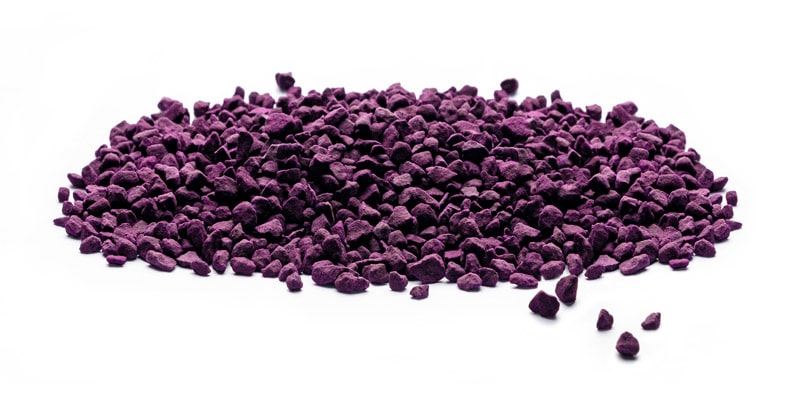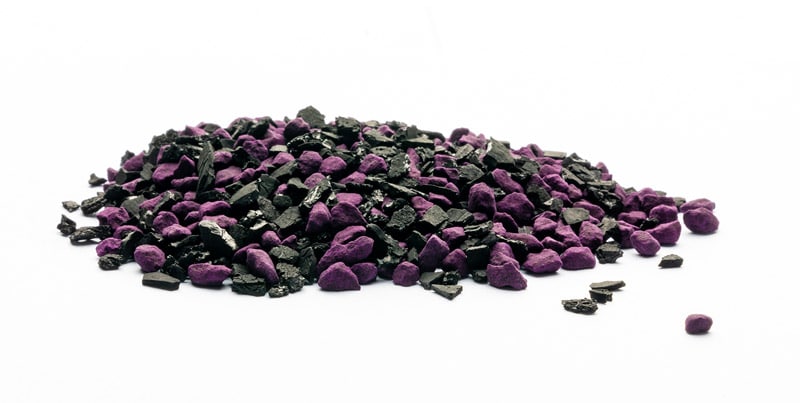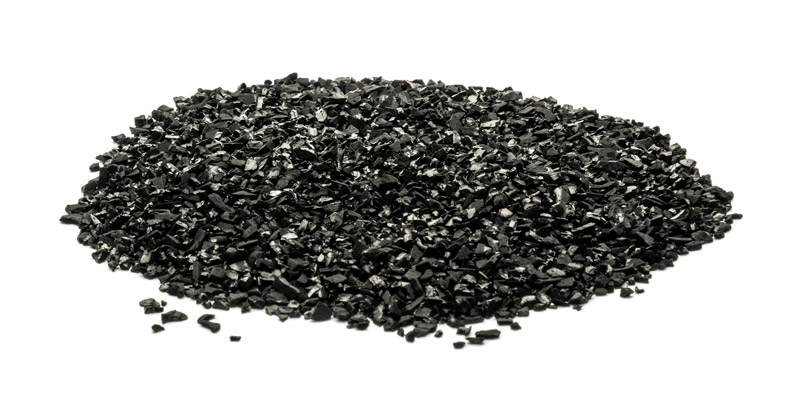Air Pollutants
Search for your pollutant, contaminant or concern for a product
Aniline
Aniline, phenylamine or aminobenzene is an organic compound with the formula C6H5NH2. Consisting of a phenyl group attached to an amino group, aniline is the prototypical aromatic amine. Being a precursor to many industrial chemicals, its main use is in the manufacture of precursors to polyurethane. Like most volatile amines, it possesses the somewhat unpleasant odour of rotten fish. It ignites readily, burning with a smoky flame characteristic of aromatic compounds. Aniline is colorless, but it slowly oxidizes and resinifies in air, giving a red-brown tint to aged samples.
Media Solution
Arsine
Arsine, AH3. Arsine is a colorless toxic gas that has a mild garlic odor. Arsine is typically found in the semiconductor industry which is formed as a by-product when arsenic comes in contact with hydrogen in water or acidic compounds.
HS-600 is typically loaded in to emergency scrubber vessels for treating low levels, but high flowrates of arsine.
Media Solution
Asphalt Fumes
Asphalt is a mixture containing thousands of different chemicals. The chemicals in asphalt vary depending on the source of the crude oil, the type of asphalt being made, and the process used. In general, the fumes are a mixture of several different types of chemicals including:
- volatile organic compounds,
- carbon monoxide,
- sulfur,
- nitrogen oxides, and
- polycyclic aromatic hydrocarbons.
Many of these chemicals also are emitted by other combustion sources such as cars and trucks, fireplaces and wood stoves, wildfires, and industries. All of these chemicals are often found in outdoor air at low levels; however, elevated levels of these chemicals may be found near an operating asphalt plant.
Media Solution
Automobile Exhaust
Exhaust gas or flue gas is emitted as a result of the combustion of fuels such as natural gas, gasoline/petrol, diesel fuel, fuel oil or coal. According to the type of engine, it is discharged into the atmosphere through an exhaust pipe, flue gas stack or propelling nozzle.
It often disperses downwind in a pattern called an exhaust plume.
Media Solution
Bathroom Odors
Bathroom odors typically include smells of urine, ammonia, sulfur, chlorine, etc. These odors can be cover up by air fresheners, but it will not fix the problem. The pollutants causing the odor need to eliminated.
Media Solution
Benzene
Benzene is an organic chemical compound. It is composed of 6 carbon atoms in a ring, with 1 hydrogen atom attached to each carbon atom, with the molecular formula C6H6.
Benzene is a natural constituent of crude oil, and is one of the most basic petrochemicals. Benzene is an aromatic hydrocarbon and the second [n]-annulene ([6]-annulene), a cyclic hydrocarbon with a continuous pi bond. It is sometimes abbreviated Ph–H. Benzene is a colorless and highly flammable liquid with a sweet smell. Because it is a known carcinogen, its use as an additive in gasoline is now limited, but it is an important industrial solvent and precursor to basic industrial chemicals including drugs, plastics, synthetic rubber, and dyes.
Media Solution
Borane
In chemistry, a borane is a chemical compound of boron and hydrogen. The boranes comprise a large group of compounds with the generic formulae of BxHy. These compounds do not occur in nature. Many of the boranes readily oxidise on contact with air, some violently. The parent member BH3 is called borane, but it is known only in the gaseous state, and dimerises to formdiborane, B2H6. The larger boranes all consist of boron clusters that are polyhedral, some of which exist as isomers. For example, isomers of B20H26 are based on the fusion of two 10-atom clusters.
The most important boranes are diborane B2H6, pentaborane B5H9, and decaborane B10H14.
The development of the chemistry of boron hydrides led to new experimental techniques and theoretical concepts. Boron hydrides have been studied as potential fuels, for rockets and for automotive uses.
Over the past several decades, the scope of boron hydride chemistry has grown to include cages containing atoms other than boron, such as carbon in the carboranes and metals in the metallaboranes, wherein one or more boron atoms are substituted by metal atoms.
Media Solution
Bromine
Bromine (![]() /ˈbroÊŠmiËn/ broh-meen or /ˈbroÊŠmɨn/ broh-min; from Greek: βÏῶμος, brómos, meaning “stench (of he-goats)”)[2] is a chemical element with the symbol Br, an atomic number of 35, and an atomic mass of 79.904. It is in the halogen element group. The element was isolated independently by two chemists, Carl Jacob Löwig and Antoine Jerome Balard, in 1825–1826. Elemental bromine is a fuming red-brown liquid at room temperature, corrosive and toxic, with properties between those of chlorine and iodine. Free bromine does not occur in nature, but occurs as colorless soluble crystalline mineral halide salts, analogous to table salt.
/ˈbroÊŠmiËn/ broh-meen or /ˈbroÊŠmɨn/ broh-min; from Greek: βÏῶμος, brómos, meaning “stench (of he-goats)”)[2] is a chemical element with the symbol Br, an atomic number of 35, and an atomic mass of 79.904. It is in the halogen element group. The element was isolated independently by two chemists, Carl Jacob Löwig and Antoine Jerome Balard, in 1825–1826. Elemental bromine is a fuming red-brown liquid at room temperature, corrosive and toxic, with properties between those of chlorine and iodine. Free bromine does not occur in nature, but occurs as colorless soluble crystalline mineral halide salts, analogous to table salt.
Bromine is rarer than about three-quarters of elements in the Earth’s crust, however the high solubility of bromide ion has caused its accumulation in the oceans, and commercially the element is easily extracted from brine pools, mostly in the United States, Israel and China. About 556,000 tonnes were produced in 2007, an amount similar to the far more abundant element magnesium.[3]
At high temperatures, organobromine compounds are easily converted to free bromine atoms, a process which acts to terminate free radical chemical chain reactions. This makes such compounds useful fire retardants and this is bromine’s primary industrial use, consuming more than half of world production of the element. The same property allows volatile organobromine compounds, under the action of sunlight, to form free bromine atoms in the atmosphere which are highly effective in ozone depletion. This unwanted side-effect has caused many common volatile brominated organics like methyl bromide, a pesticide that was formerly a large industrial bromine consumer, to be abandoned. Remaining uses of bromine compounds are in well-drilling fluids, as an intermediate in manufacture of organic chemicals, and in film photography.
Bromine has no essential function in mammals, though it is preferentially used over chloride by one antiparasitic enzyme in the human immune system. Organobromides are needed and produced enzymatically from bromide by some lower life forms in the sea, particularly algae, and the ash of seaweed was one source of bromine’s discovery. As a pharmaceutical, simple bromide ion, Br–, has inhibitory effects on the central nervous system, and bromide salts were once a major medical sedative, before being replaced by shorter-acting drugs. They retain niche uses as antiepileptics.
Media Solution
Burned Food
Blacken and charred–If you have ever left the toast in the oven or left the burger on a grill too long you know this smell. Burnt food gives off harmful chemicals that can removed with media. These chemicals include amines, polycyclic aromatic hydrocarbons (PAHs), and acrylamide.
Media Solution
Butadiene
1,3-Butadiene is a simple conjugated diene with the formula C4H6. It is an important industrial chemical used as a monomer in the production of synthetic rubber. When the wordbutadiene is used, most of the time it refers to 1,3-butadiene.
 HS-600
HS-600
 XB-17
XB-17
 HS-AC-P-PO
HS-AC-P-PO
 HS-AC Water
HS-AC Water
 HS-CL
HS-CL